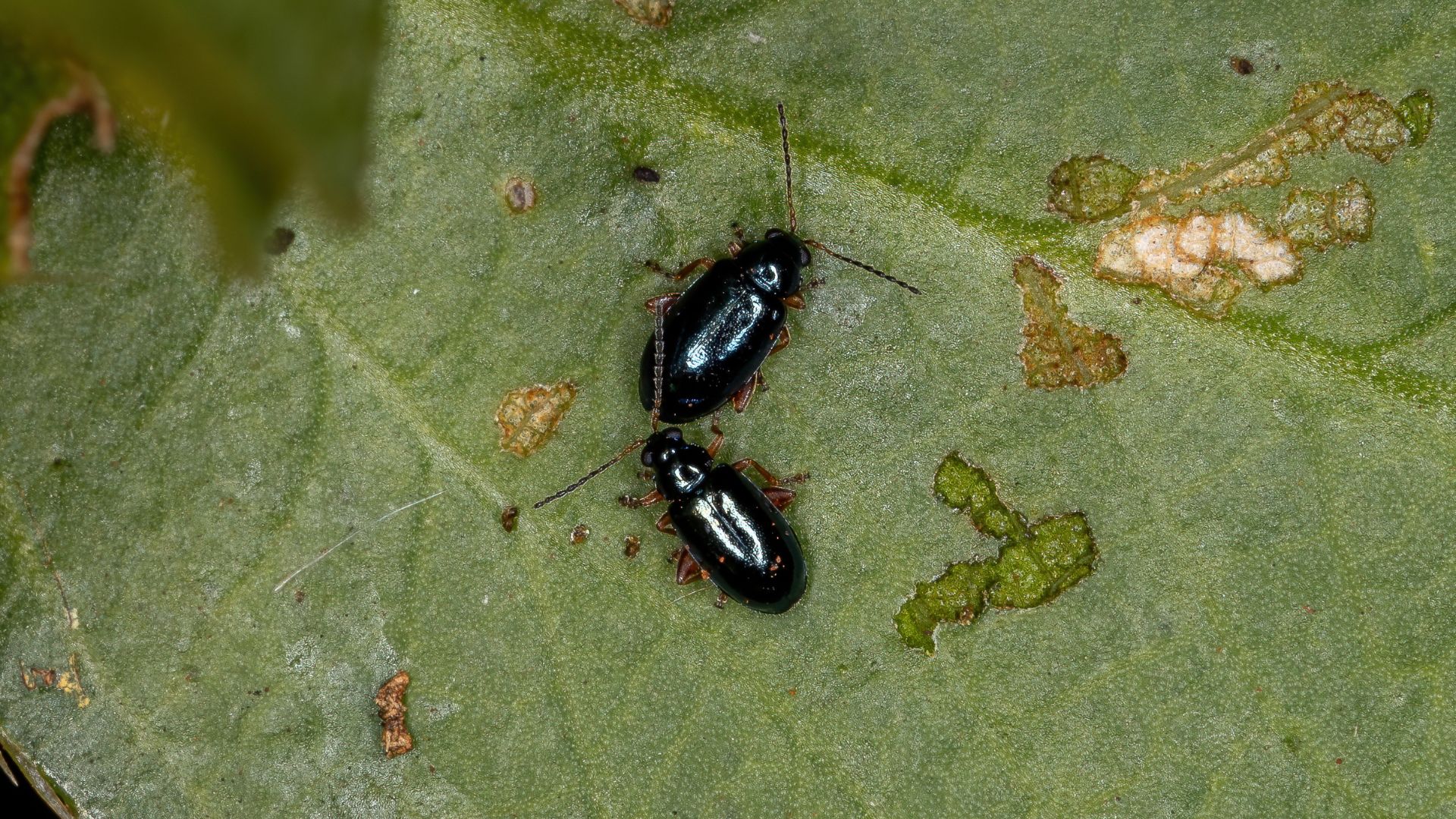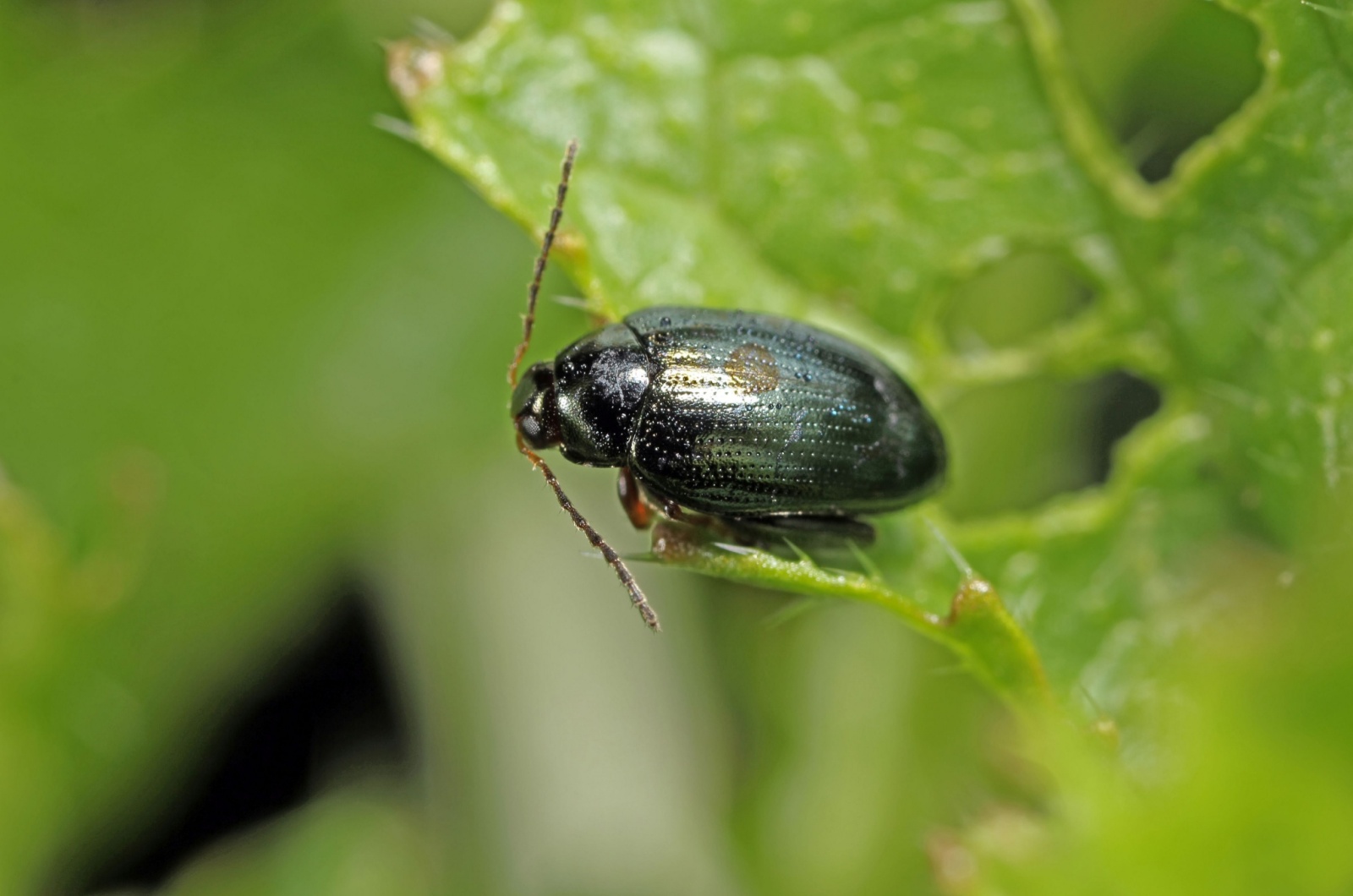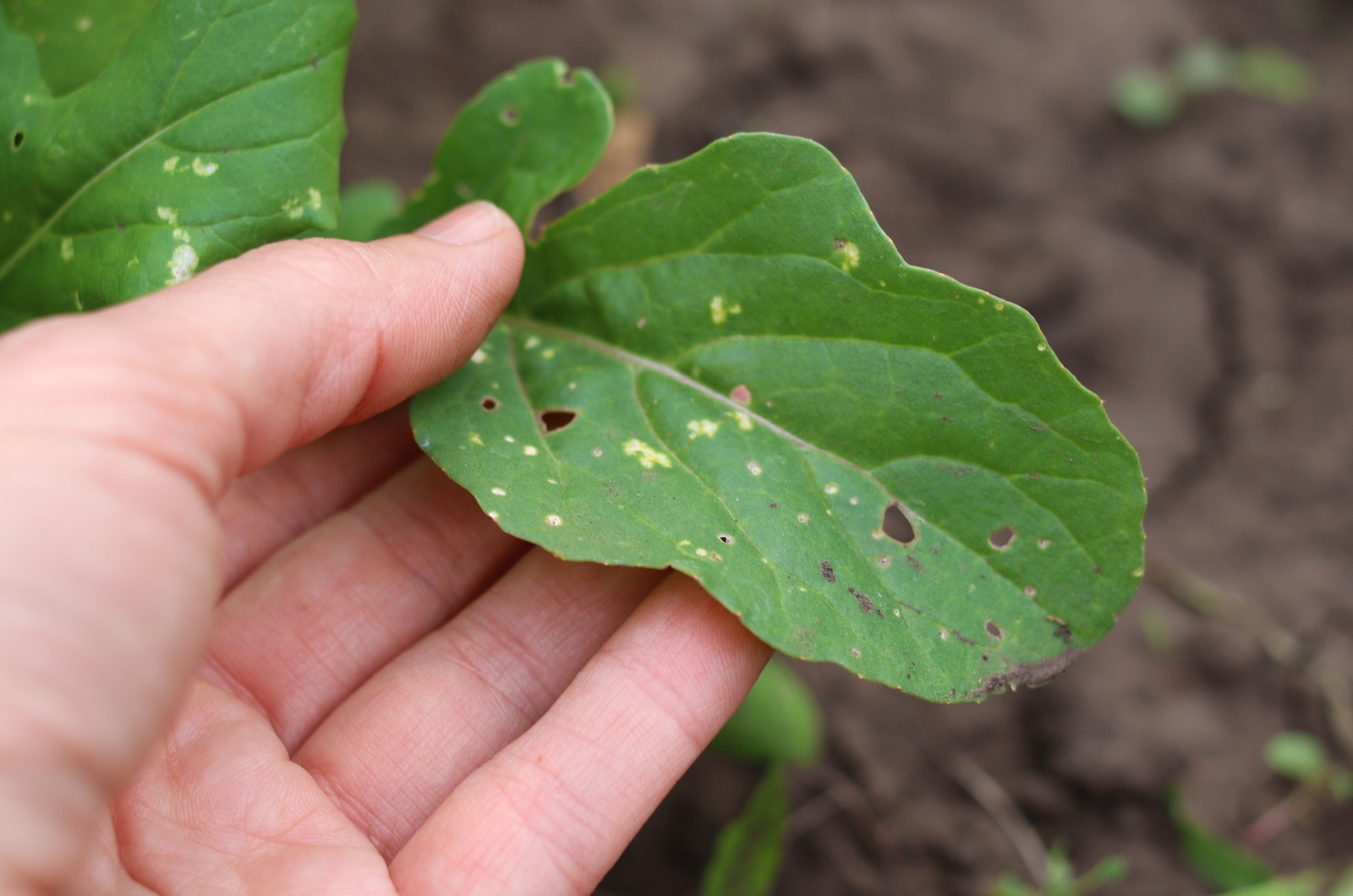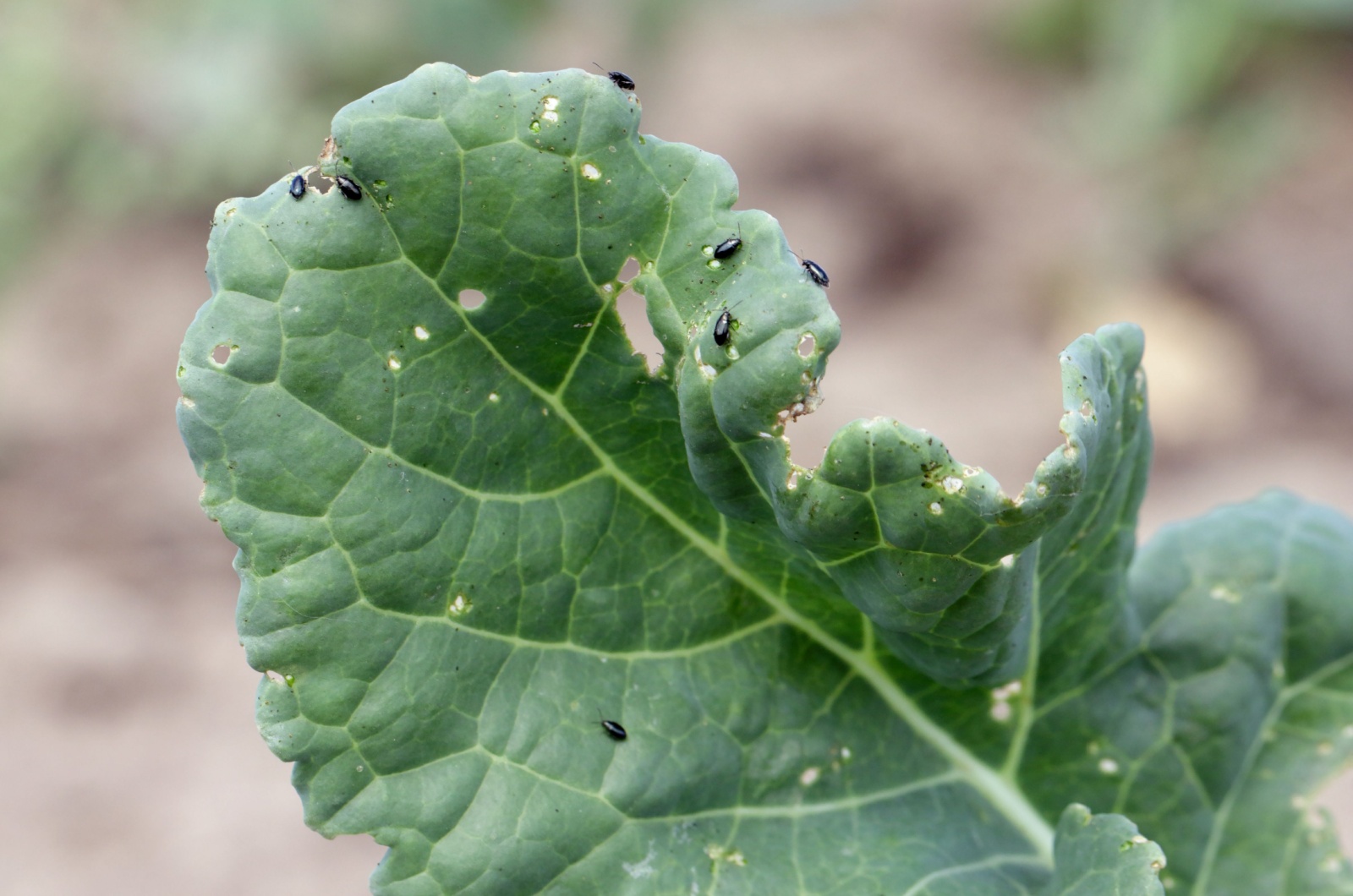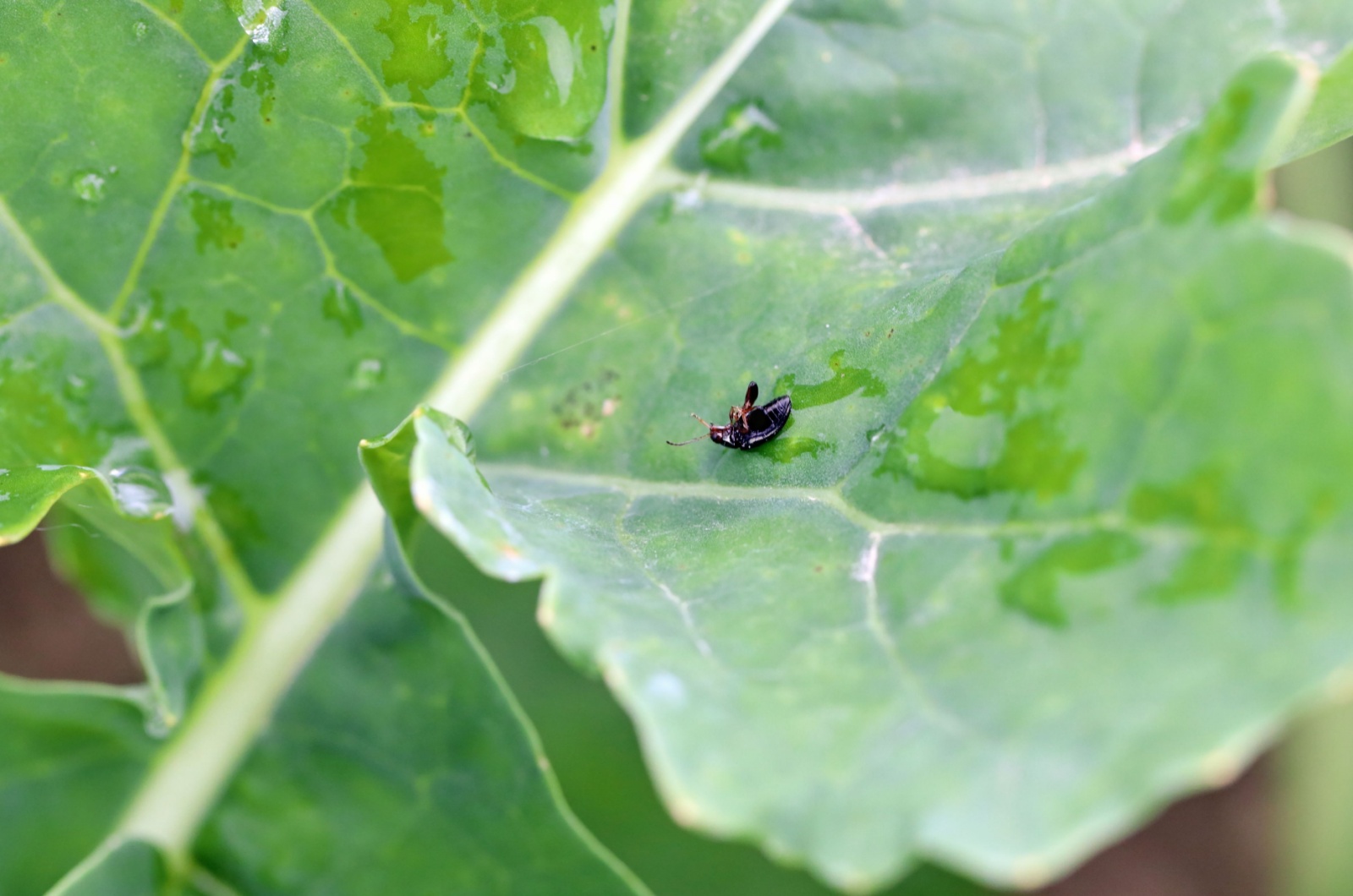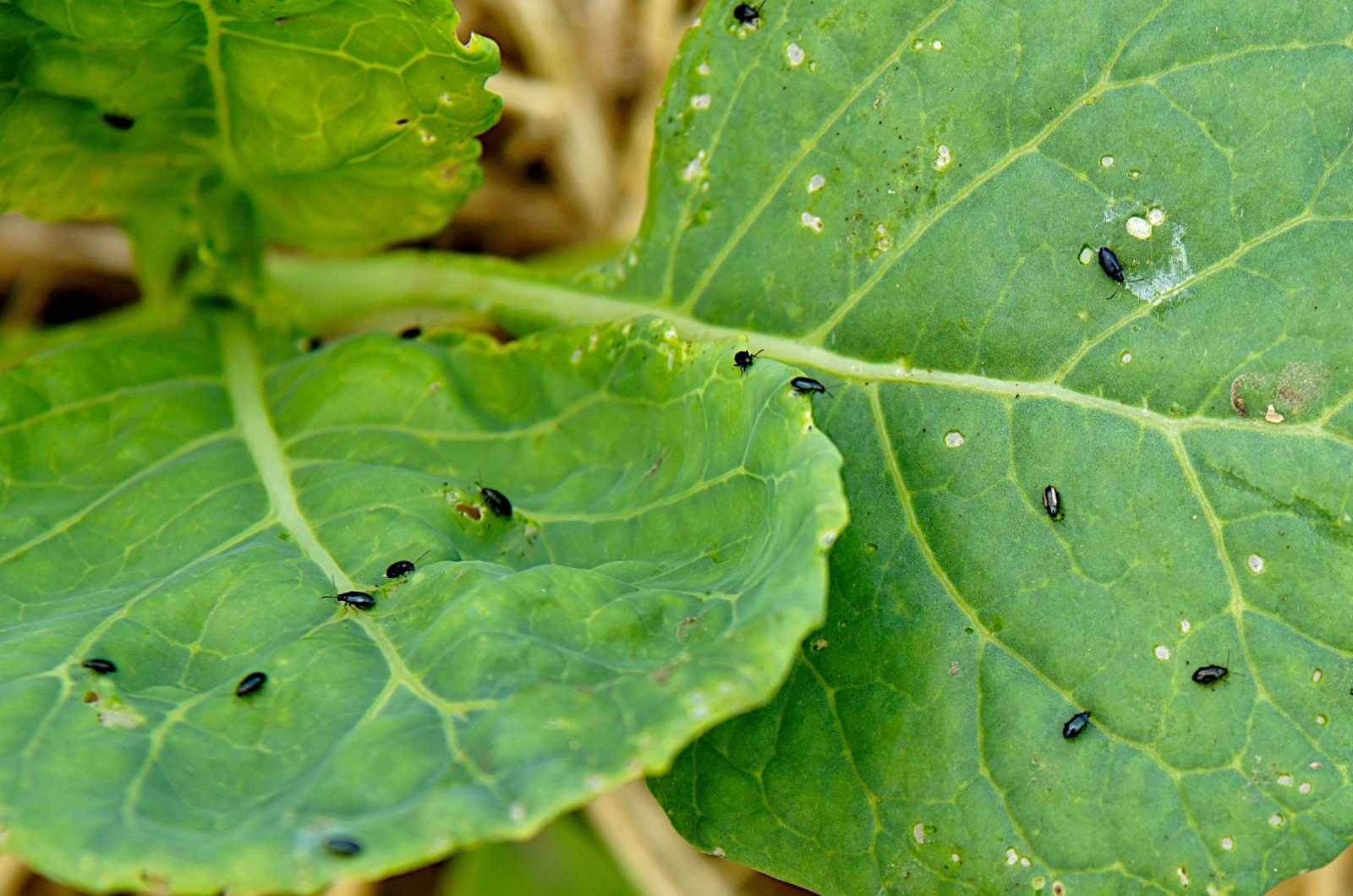Tired of those pesky flea beetles wreaking havoc in your garden? I know the feeling!
Dealing with tiny pests can be frustrating, especially when they munch on your favorite plants.
I’ve faced my fair share of troubles with them – one season they completely ruined my leafy greens, leaving me with nothing to harvest. Believe me when I say dealing with flea beetles is an absolute nightmare!
So, I decided to research a bit and stumbled upon some straightforward and practical solutions that helped me combat them effectively. Don’t worry, it’s a simple equation that guarantees success for everyone
With a little bit of effort and the right techniques, you too can say goodbye to those unwanted guests and protect your garden from further damage.
So, let’s learn how to bid farewell to these unwanted guests once and for all!
#1 First And Foremost, Get To Know These Pesky Pests
Flea beetles earned their name due to their tiny size and unique way of moving. When disturbed, these insects use their long hind legs to jump away swiftly, looking like actual fleas as a result.
With their rapid movement and ⅛-inch long bodies, they are impossible to spot. I swear, I couldn’t see any but I definitely knew they were there.
I also found out that there are different species of flea beetles that attack our plants, and they come in a variety of colors. They commonly range from tan to black, while some species have brighter tones and stripes.
Adult flea beetles spend the winter in garden debris, emerging in early spring when temperatures rise to about 50ºF.
Related: Watch Out For These 8 Common Pests Because They Can Destroy Your Plants
#2 Then, Find Out What They Like To Eat
Different kinds of flea beetles have their own favorite plants to nibble on. Some types are picky eaters and only go for specific plants, while others will chomp on almost anything they find!
In my experience, I’ve noticed that flea beetles often target plants in the brassica family, like broccoli, cauliflower, and kale.
If nightshade plants like tomatoes, peppers, and eggplants are on the menu, flea beetles will definitely show up!
But you can also spot these pesky pests on other veggies like squash, corn, and lettuce.
Keeping an eye on weeds is important too, as some of them can attract flea beetles, adding to the challenge of keeping your garden pest-free
#3 Look For Pits And Holes In Plant Leaves
Flea beetles are tiny and fast, so it can be quite difficult to notice them in the garden.
Generally speaking, it’s much simpler to identify a flea beetle infestation by looking at the damage they cause.
Although larvae don’t do much harm, they may cause stunted seedling growth as they feed on plants’ roots. However, it’s a different story with adult flea beetles.
As they nibble on plants, they create a speckled pattern on the leaves, leaving them filled with tiny pits and holes.
Because flea beetles are most active in the spring and are drawn to sensitive, fresh leaves, seedlings are particularly vulnerable to them.
Mature plants can usually handle flea beetles chewing on them, but leafy greens might not look as good (or give you anything to eat!).
The real trouble with flea beetles is they can spread diseases to your other plants, like blights and wilts, which can wreck your whole garden.
Related: Keep Your Garden Safe By Getting Rid Of These 7 Pesky Pests
#4 Neem Oil And Insecticidal Soap To The Rescue
When dealing with any type of pest infestation, it’s important to act quickly and minimize the damage. One of the easiest methods that worked very well for my plants is spraying them with organic insecticidal soap or neem oil.
I applied these in the evening to avoid leaf burn. You can use a store-bought insecticidal soap or make one on your own by mixing Castille soap with water and adding a bit of neem oil.
However, I also found out that kaolin clay is another great solution worth trying; it acts as a protective barrier against flea beetles and other garden pests.
If you decide to use kaolin, mix it with water (as per the instructions) and spray it onto the affected plans on a dry day. Once applied, kaolin clay makes it challenging for pests to feed on plants and prevents them from laying eggs.
#5 Game, Set, Match – Act Preventively And Don’t Bother With Them Anymore
The best way to deal with pests is actually not having them around at all!
Make wise planting decisions and keep your garden nice and tidy. I didn’t clean up plant debris during the winter and ended up with no harvest (don’t be lazy like I was!).
It’s always better to prevent pests from attacking your plants than to treat the infestations. These tricks saved my leafy greens, and hopefully they will save yours too:
• Clear away any infected plant debris before starting a new planting season. Also, till the soil if the infestation was severe.
• Use floating row covers early in the season to protect your plants from pests like flea beetles.
• Don’t plant seeds or seedlings for a couple of weeks in the spring to starve out the pests.
• Practice companion planting – flea beetles don’t like aromatic plants like catnip or green onions.
• Encourage beneficial insects by planting flowering plants such as dill and sweet alyssum near your vegetables.
• Consider planting trap crops like radishes to divert flea beetles away from your main crops and protect your leafy greens from damage.
By following these tips, you’ll definitely avoid flea beetle infestation and enjoy a bountiful harvest. However, if you do end up with flea beetles ruining your plants, just remember what I used to treat them.
Before you do anything, make sure that you are 100% dealing with a flea beetle infestation – learn what they eat and notice how they damage plants.
This is crucial because sometimes the issue might not be flea beetles, but something else. So, pay close attention and don’t let those pesky pests ruin your crops!
Also read: Expert Horticulturist Explains How He Beat Pests In His Garden

